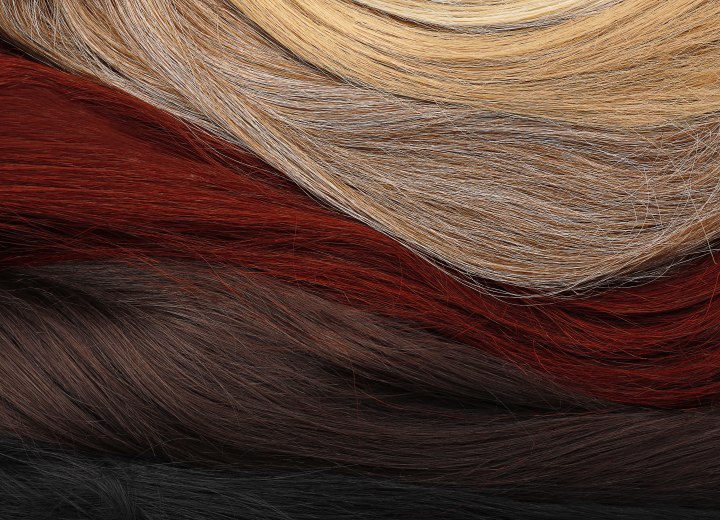High-Lift Color or Bleaching

I had dyed my hair black some time ago. I’ve since let that grow out so that a good few inches on the top are dark brown. The black on the bottom, though permanent, has faded somewhat however, so that the two colors are not that different. What I want to do is return to black, but I want the underside of the hair to be a dark, blood red. Not the tips, just the underside of the hair.
I’m wondering what the best way to do this is. If I were to dye my hair black, what would the next step be? Bleach? High-lift color?
The artificial hair color formulas we use are also translucent so that they can help keep the variances in the pigments in the colored hair and avoid flat color results. In any case, these colors add to the amount of pigment in the hair and will make it darker unless there is something to lighten the hair and compensate. For instance, unless the developer used with the color formula is designed to lighten the hair somewhat, applying a blonde hair color to medium-brown hair will result in darker hair than was started with.
When dealing with some artificial hair color, especially those NOT normally seen as human hair color, the results can be unexpected when applied to darker hair shades. The color that is meant to be candy-apple red may end up burgundy when used on someone whose hair is already dark to begin with. So, depending on the finishing color you want to achieve, you may need to lighten the hair before applying the color.
Your best bet is to go to your beauty supply store’s color aisle and look through the swatches on the shelf. Find a swatch that most closely matches your own hair’s color, and look at the number code of the color. The lightness levels of hair color are ranked 1 through 10 with 10 being lightest. Remember this number and check out the color you want to use on the hair.
If that color’s number is lower than your natural color’s number (meaning the color is darker) you can generally get a fair approximation of the color results expected. If the color you want to use is higher in number, then you’ll need to lighten your hair first. If this means only one or two shades, you can use high-lift color. If you need to lift the color more than three shades, you will need to use a bleaching agent.
©Hairfinder.com
See also:
How to color hair
Pigment production
The meaning of the numbers on hair dye boxes
The meaning of the 10 different hair color levels
